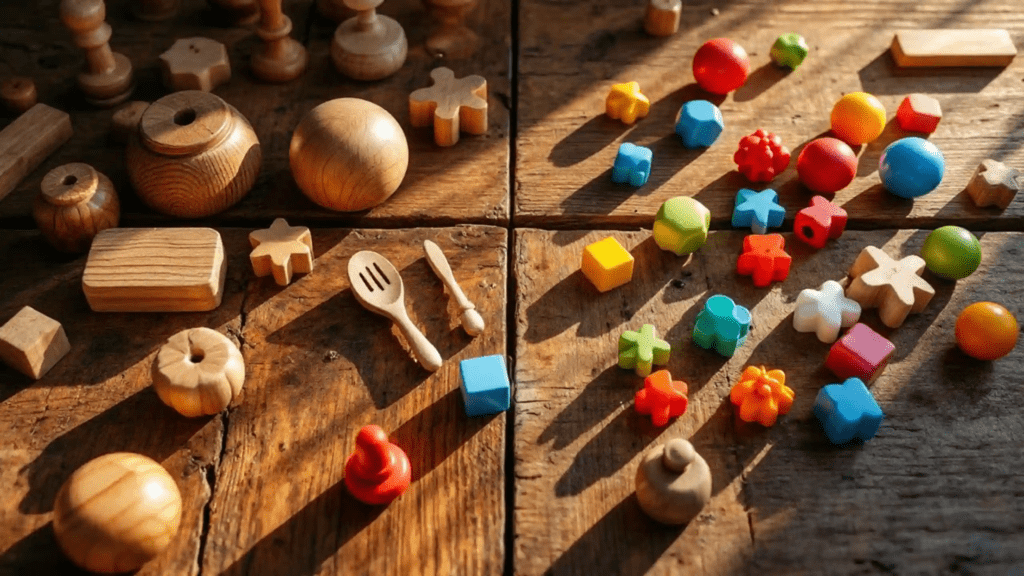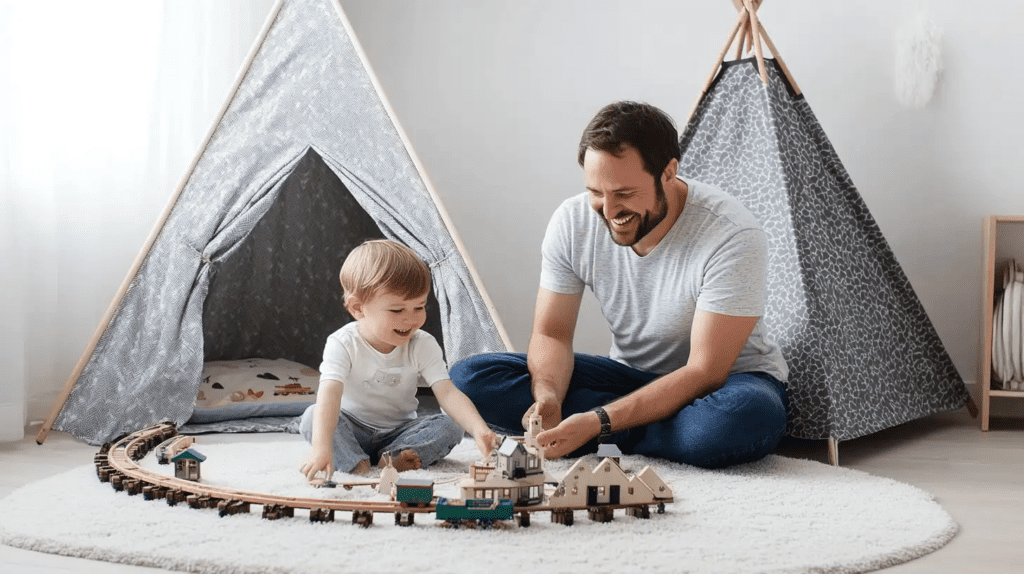When choosing between wood and plastic toys, you might find yourself pondering the benefits and drawbacks of each.
Wooden toys often stand out for their sustainability and durability. But is that enough to sway your decision? On the other hand, plastic toys feature vibrant colors and varied designs. They might appeal to the senses yet pose specific environmental concerns.
As you weigh the impact on creativity and safety, it’s essential to reflect on how each option aligns with your values and priorities. So, what truly makes one material superior to the other in nurturing a child’s development?
Key Takeaways
- Wooden toys are environmentally sustainable and made from biodegradable materials.
- Wooden toys also offer superior durability and safety with non-toxic materials.
- Wooden toys promote open-ended, imaginative play. On contrast, plastic toys can distract with flashy features.
- Wooden toys support the development of fine and gross motor skills. Conversely, plastic toys may overwhelm children with bright colors and sounds.
Wood vs Plastic Toys: Environmental Impact
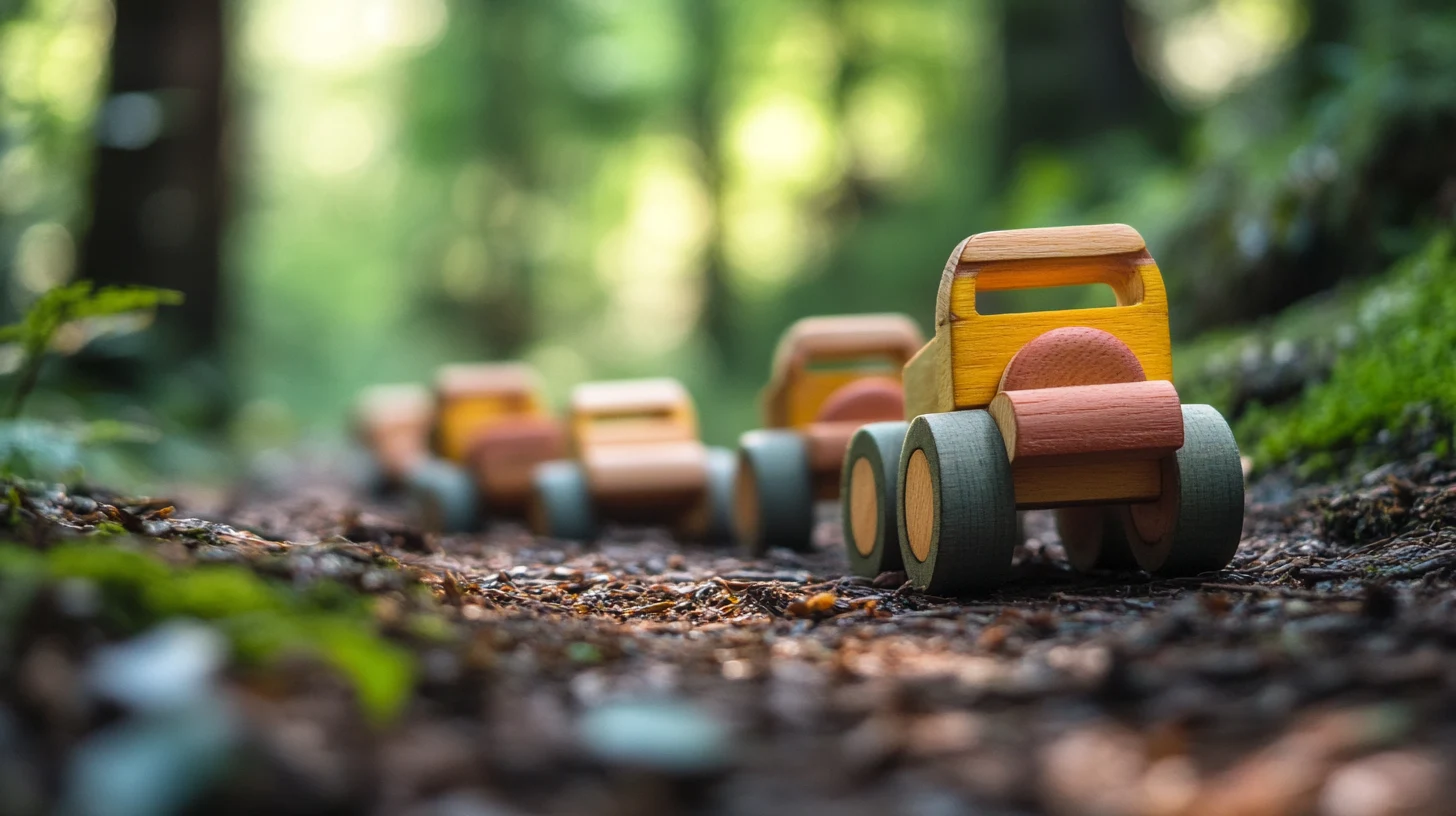
Let’s explore the environmental implications of wood versus plastic toys.
Why Are Wood Toys Considered More Sustainable?
Wooden toys are typically more sustainable. Because they’re usually made from biodegradable materials like sustainably sourced or recycled wood. This makes them better for the environment compared to plastic toys.
Selecting wooden toys supports sustainable forestry practices. Natural materials used in wooden toys reduce your ecological footprint. Thus, you’ll help preserve natural resources and ecosystems.
Plus, their durability means they won’t break easily. This will minimize waste and the need for frequent replacements.
How Do Plastic Toys Contribute to Landfill Issues?
Plastic toys are made from non-biodegradable materials. This means they can linger in landfills for hundreds of years. This contributes to the mounting problem of plastic waste. Millions of tons of plastic waste, including toys, are discarded yearly. This exacerbates the global plastic waste crisis.
The short lifespan of plastic toys means they frequently end up in landfills. Their production process further contributes to environmental degradation, releasing harmful pollutants.
Over 90% of plastic waste is not recycled, so plastic toys aren’t repurposed or reused, worsening landfill problems.
Wood vs Plastic Toys: Durability and Safety
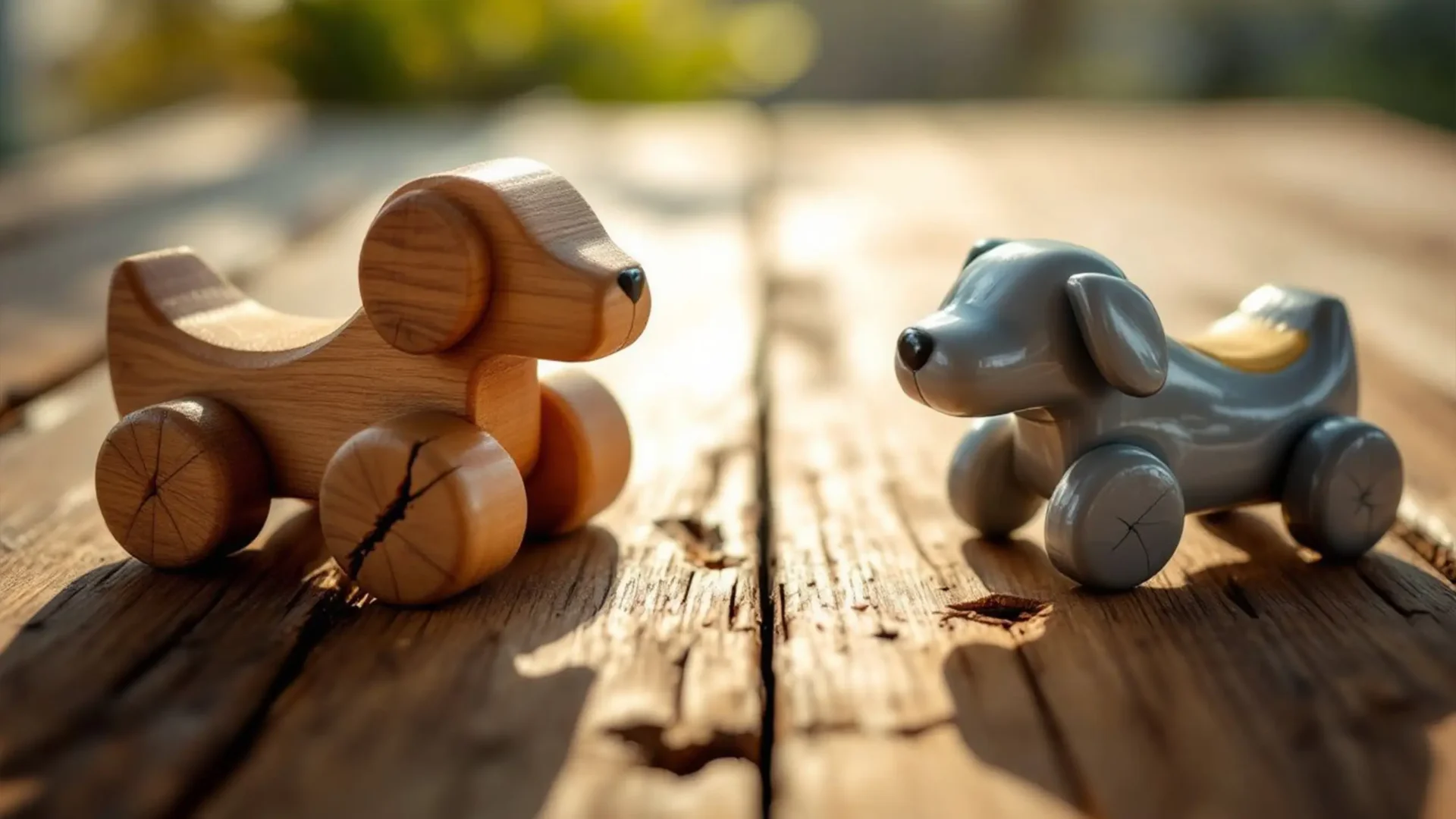
When choosing between wooden and plastic toys, you’ll notice wooden options are far more durable.
Comparison of Durability Between Wooden and Plastic Toys
When considering the durability of toys, wooden options clearly outshine plastic ones.
Wooden toys are generally crafted from high-quality materials. This makes them resistant to wear and tear.
In contrast, plastic toys can break easily, creating small, dangerous parts. This means wooden toys typically last longer. This allows them to be cherished as family heirlooms.
With wooden toys, you promote sustainability compared to the disposable nature of many plastic toys.
Benefits of Wooden Toys in Safety
Wooden toys are safer because they don’t contain harmful chemicals like BPA. These chemicals can disrupt hormone levels, posing health risks to children.
Additionally, the natural materials used in wooden toys usually result in non-toxic finishes. These finishes are essential for ensuring your child’s wooden toys are safe.
Wooden toys are durable and less likely to break into small, hazardous pieces. Thus, they reduce the risk of choking.
Wood vs Plastic Toys: Encouraging Creative Play
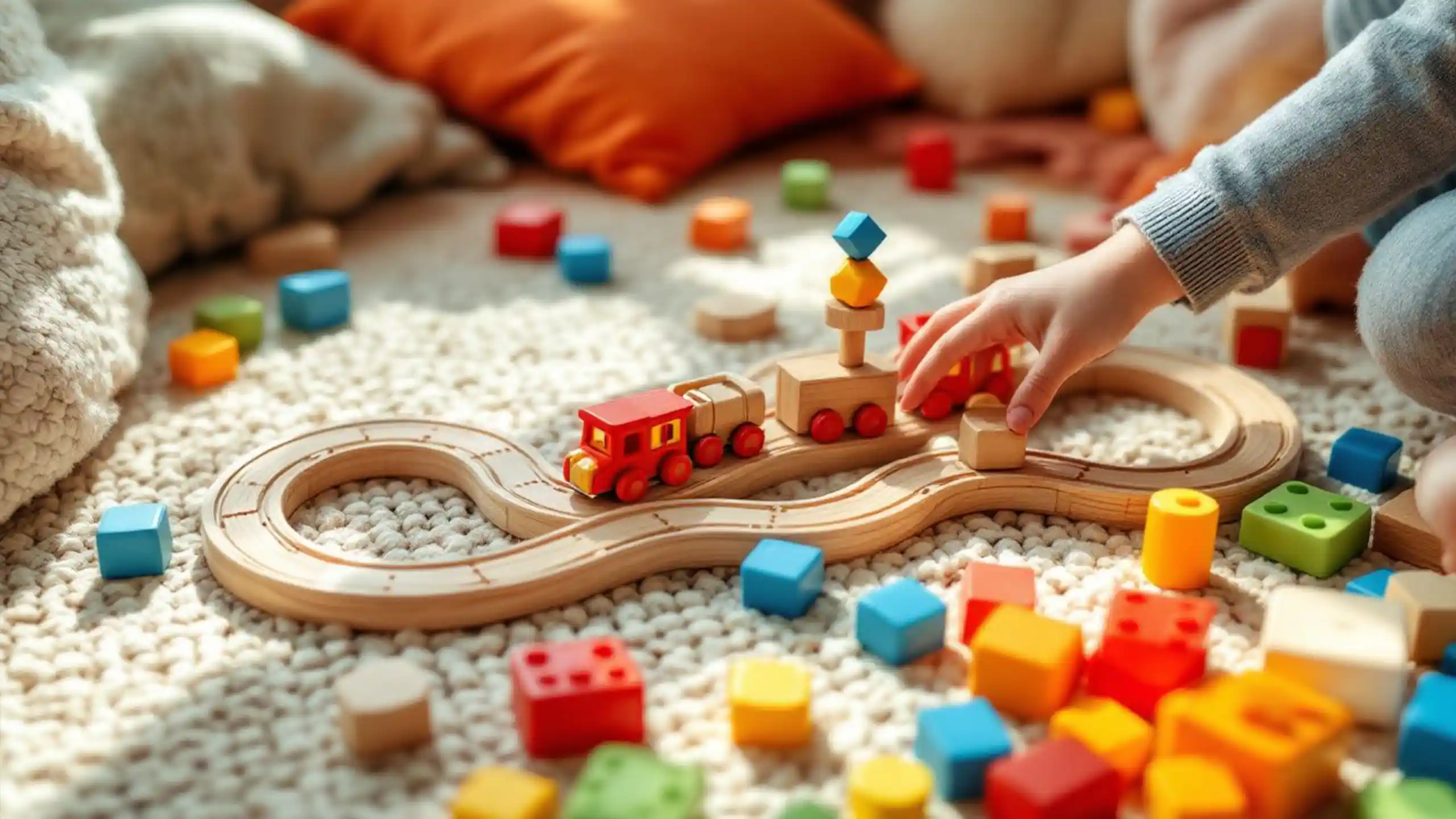
Some might wonder how wooden toys can boost creativity and learning. Wooden toys encourage imaginative play. They provide a blank canvas for your child’s mind.
Unlike structured plastic toys, their simplicity fosters creativity and imaginative thinking. Your child can transform a wooden block into a car, castle, or anything they dream up. This will enhance their cognitive development.
As they manipulate these toys, they’re also honing fine motor skills and hand-eye coordination. The tactile nature of wood promotes sensory exploration. This is essential for understanding abstract concepts.
Buying Considerations for Wooden Toys
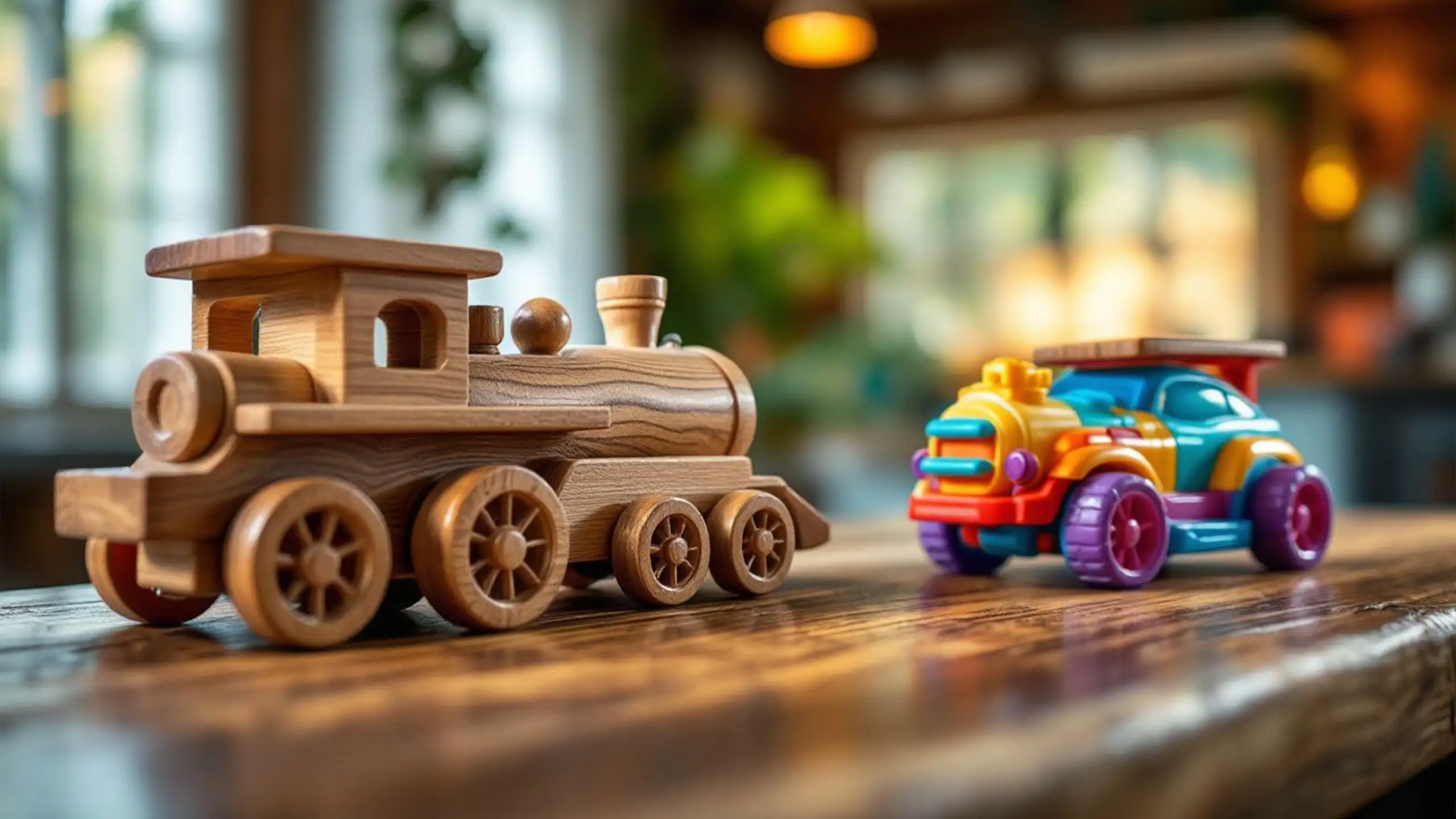
When buying wooden toys, it’s important to consider their safety and benefits for children.
First, focus on eco-friendly wooden options. Make sure they’re made from sustainably sourced materials. This choice supports environmental responsibility and helps reduce your ecological footprint.
Next, prioritize wooden toys with non-toxic finishes. Or select unpainted versions to keep harmful chemicals at bay.
For lasting value, check for durability signs. High-quality wooden toys can endure rough play. This makes them ideal for passing down through generations.
When it comes to fostering creativity, open-ended wooden toys are a good choice. They can stimulate imagination and versatile play.
Types of Wooden Toys for Toddlers
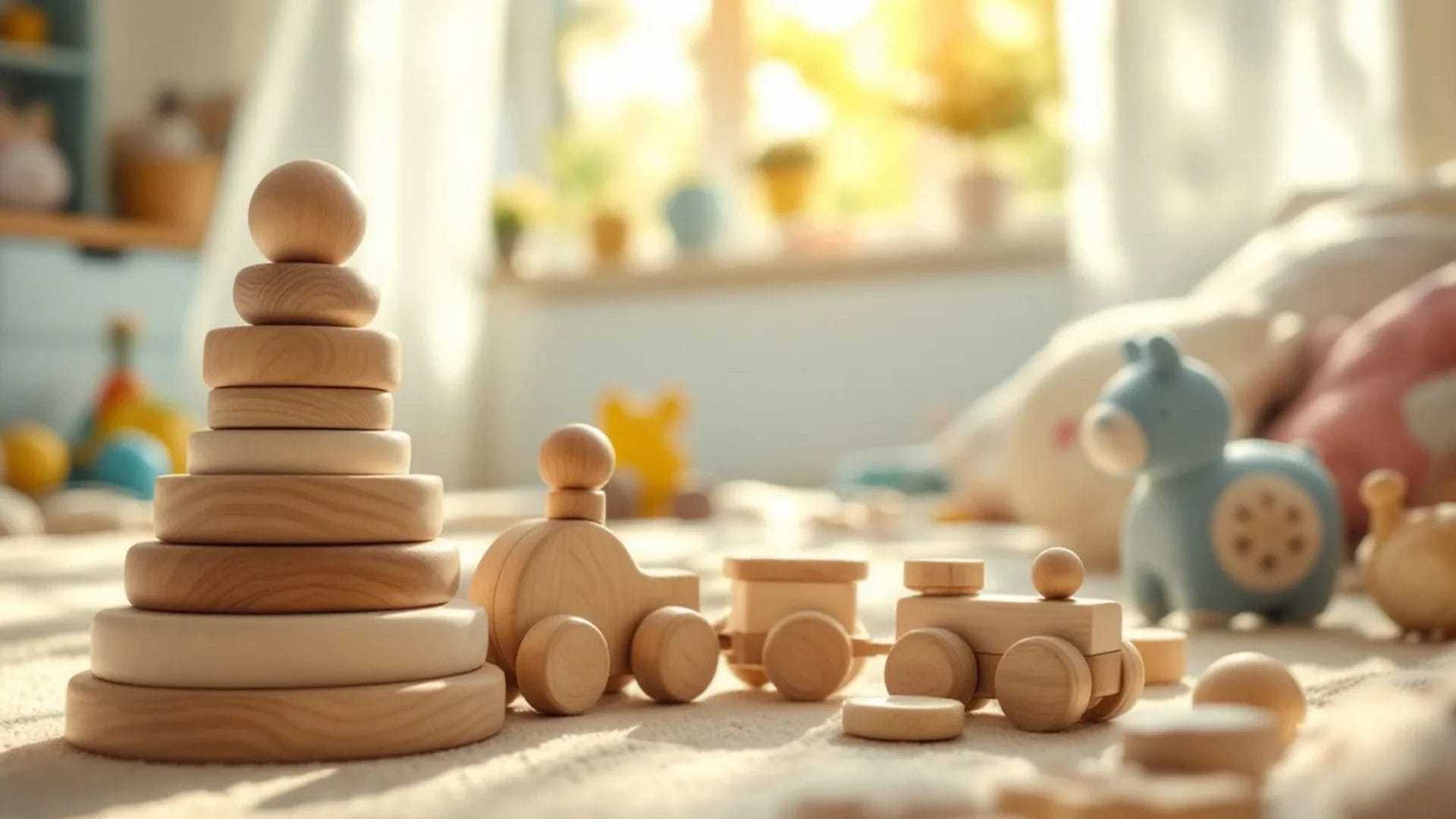
During the early years, wooden toys can be an excellent choice for toddlers. These toys enhance fine motor skills and cognitive development through engaging playtime.
- Building Blocks: These are colorful cubes that kids can stack and arrange.
- Puzzles: Wooden puzzles have pieces that fit into a board. This helps with shape recognition.
- Animal Figures: Small wooden animals are great for imaginative play.
- Pull Toys: These toys can be pulled along on a string, encouraging walking.
- Shape Sorters: These toys help kids learn shapes by fitting pieces into the correct holes.
- Musical Instruments: Simple wooden instruments like xylophones or maracas are fun to play.
- Stacking Toys: These allow toddlers to stack rings or other shapes in order.
- Dollhouses: Wooden dollhouses provide a space for pretend play with tiny figures.
- Train Sets: Wooden train sets come with tracks and cars for creative play.
- Activity Cubes: These have various activities on each side, like bead mazes and spinning gears.
Value of Simple Wooden Toys
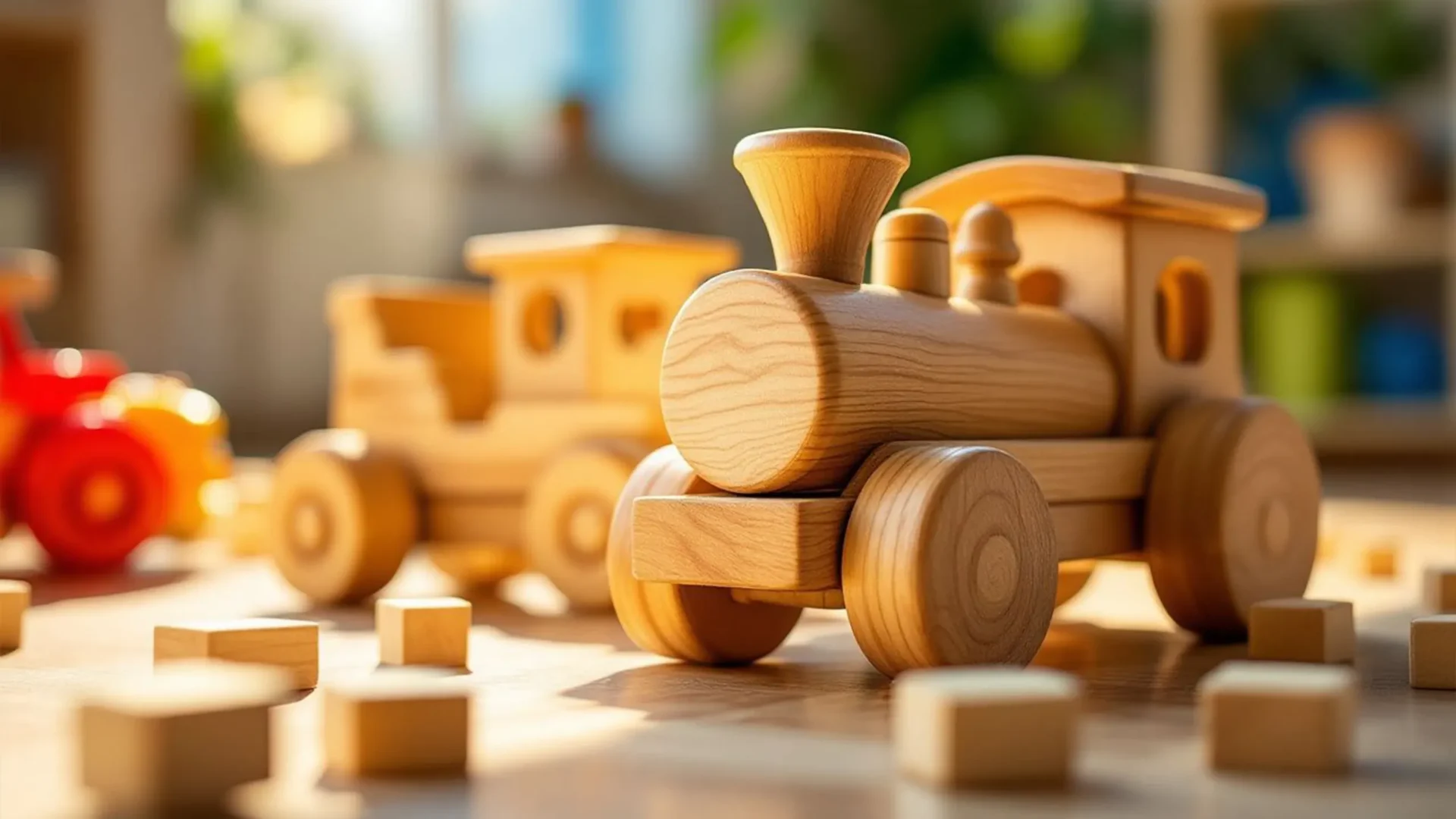
Simple wooden toys can truly stand out as beneficial for children. They offer a range of developmental advantages. Unlike plastic toys, wooden toys encourage open-ended play, which fosters creativity and imagination. They allow your child to lead their own play experiences and contribute to child development.
The tactile nature of these playthings enhances sensory exploration. They aid cognitive development and promote fine motor skills.
Wooden toys’ minimalist designs eliminate distractions often found in flashy plastic toys. They promote deeper engagement and sustained focus during play.
Fewer, high-quality toys like these support stronger emotional connections and more meaningful interactions. They’re definitely a wise choice for your child’s growth.
Common Misconceptions About Wooden Toys
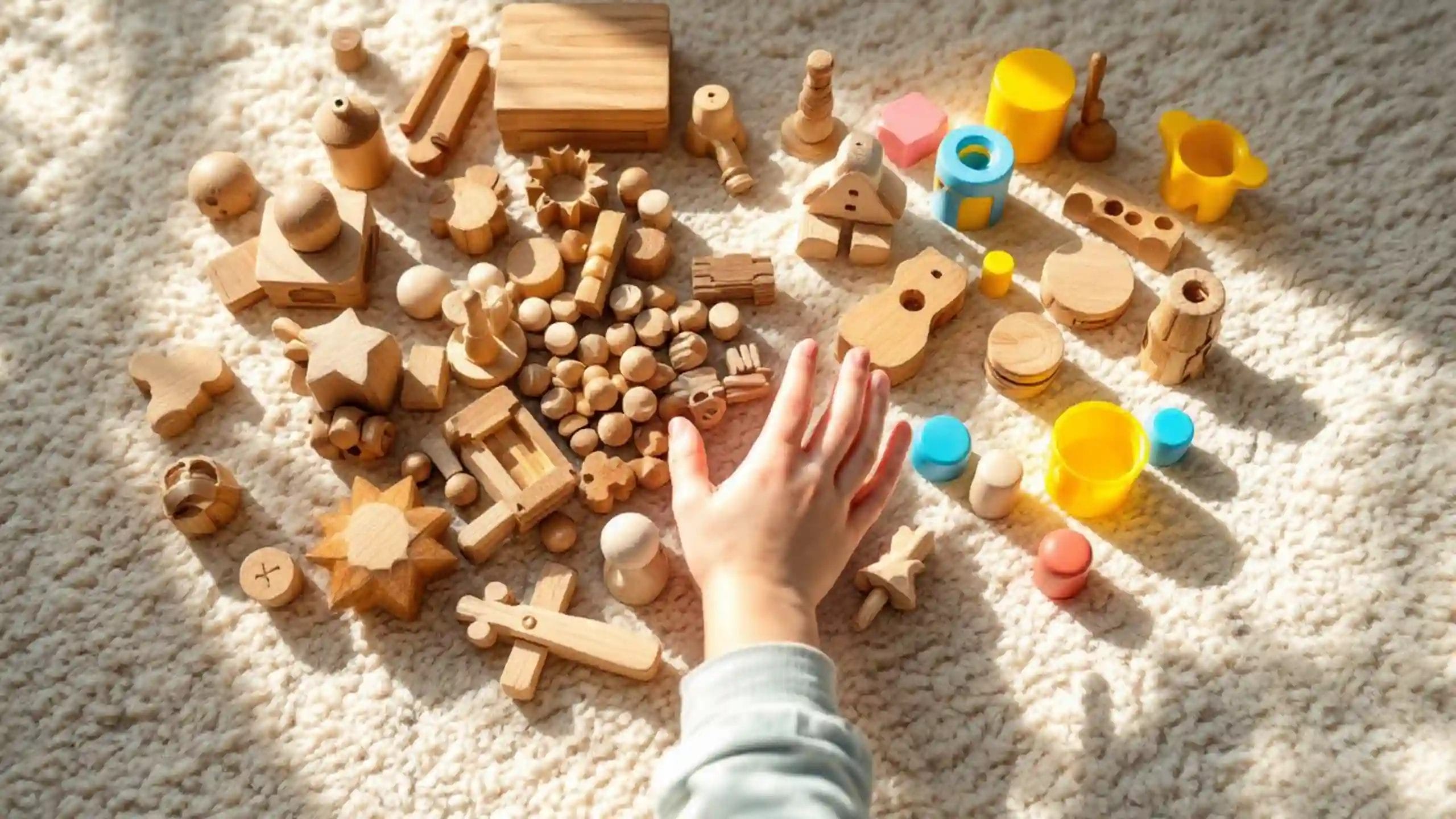
Misconceptions that can deter potential buyers often surround wooden toys. This is especially evident when comparing them to their plastic counterparts.
One common misconception is that wooden toys are always expensive. But there are plenty of affordable options that don’t compromise on quality or safety.
Many believe plastic toys are safer. But wooden toys are better than plastic toys. Because they lack harmful chemicals like BPA.
Another myth is that wooden toys lack versatility. Yet, their open-ended design encourages imaginative play and creativity across various age groups.
Wooden toys are not only for younger kids. They can support developmental milestones throughout childhood.
People also assume they’re prone to damage. But their durability and ability to be repaired make them a long-lasting investment.
Conclusion
You’re making a wise decision when you prefer wooden toys over plastic toys. Wooden toys don’t just last longer. They also provide a safer, chemical-free play experience. They spark creativity and foster essential developmental skills through open-ended play. They align with the key principles of Montessori education.
So, next time you shop, consider the sustainable and durable wooden options. You’re not just buying a toy but investing in a better future.
FAQs
Are Plastic or Wooden Toys Better?
Wooden toys offer durability, safety, and eco-friendliness. They encourage creativity and cognitive development. Plastic might be cheaper initially. But wooden toys provide lasting value and a more enriching play experience.
Are Wooden Toys Better for Child Development?
Wooden toys enhance your child’s development. They foster creativity, improve hand-eye coordination, and promote focused play. They encourage deeper emotional connections. This makes them a great choice for nurturing young minds.
Why Would a Parent Choose Wooden Toys Over Plastic Ones?
You’d choose wooden toys for their durability, safety, and eco-friendliness. They encourage creativity and problem-solving, offering a calmer play environment. Wooden toys last longer and create meaningful connections. They’re a worthwhile investment for your child’s development.

